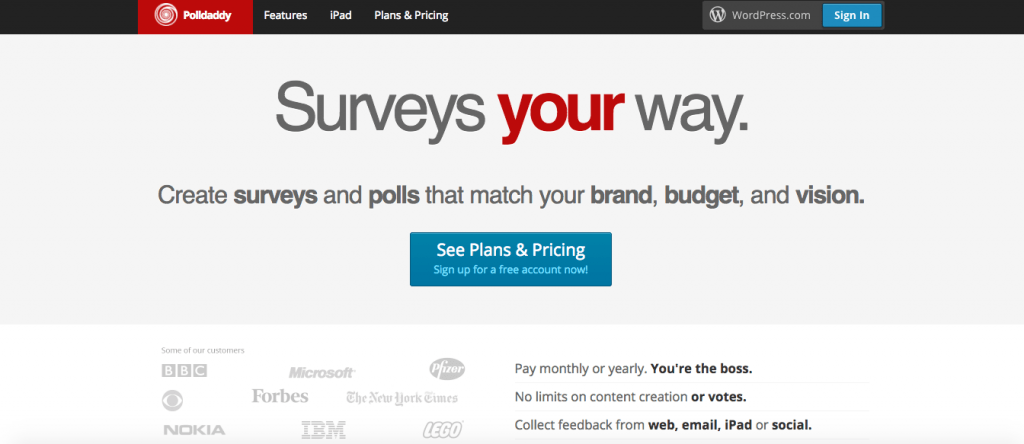Starting and running a successful blog involves extensive research and reading. The process is harder for beginners, especially those who do not know what to blog about. Even if you are already a running blog, you will come across new ideas to improve it. Continuous learning is necessary to maintain and improve your rank. How do you organize all this information? You will forget everything you read if you do not use the right tools to record and organize the information. You also need tools to manage the content or posts on your blog and responses from your readers. Here are some of the tools you should have in your arsenal:
1. Read-it-later
Sometimes you come across useful information on the internet when you do not have enough time to read and apply it. Read-it-later creates a list of web pages that you can refer to later. You can also save items saved on your mobile device or computer. The tool enables you to read the saved items offline or online.

2. Diigo
Diigo allows you to annotate web pages when launching a blog. You can add sticky notes, highlight, save images, bookmark, and take screenshots of useful pages. You create a Diigo account where you will manage and access all the research findings. When revisiting the web pages, all the annotations will automatically appear. You can also view any annotations that other people add to any of the pages.
3. ScribeFire
The tool will be useful when you start posting content on your blog. You create ScribeFire as an extension to your browser. The tool is compatible with the most popular browsers including Safari, Opera Mini, Chrome, and Firefox. Once you add the extension, you can post content directly from your browser. Bloggers love ScribeFire because it allows them to manage posts and post to several blogs at the same time. The tool has so many features that you may not use some of them ever. However, you have an efficient way of creating and publishing posts, dropping texts and images, and scheduling posts. Other important features include editing web pages and categorizing posts.

4. Dropbox
Multimedia content is one way of bringing traffic to your blog. Such content requires large storage space. You may not require much storage space at the start. However, your device’s storage space may run out as you build your blog. Dropbox enables you to save large files including documents, images, and videos. The tool allows you to share the saved items with other bloggers or your team members.
5. Hatchbuck
You need a functional tool to manage your emails and emailing list, especially if you intend to monetize your blog. Hatchbuck makes it easy for you to read tons of emails. It also enables you to create templates for new emails, schedule emails to send later, and track the performance of email marketing.
6. Qumana
Here is another tool to help manage your posts. Qumana is a desktop editor that simplifies the process of editing and publishing posts to your blogs. Other important features include adding ads and images to your posts, Technorati tagging, and text formatting. You can use Qumana offline. The tool is compatible with Mac and Windows platforms.
7. Windows Live Writer
The blog editor is very popular among bloggers. The tool works on the Windows platform and enables you to create and edit new posts. You can edit old blog posts as well. Windows Live Write gives you a preview of your posts before you publish them. You will view the posts as your readers will see them on your blog. You can add videos, images, and maps to your posts directly from tools. In addition, you can enhance the tool’s functionality by adding plugins. Windows Live Writer is compatible with more than a hundred plugins.
8. Veeb
Most blogging tools integrate with the operating system on your computer or mobile phone. You integrate Veeb with your blogging platform. The tool is currently compatible with Drupal and WordPress. The editor conducts a semantic text analysis on your posts or content. The process involves searching for links and significant keywords that will boost your posts’ ranking. Veeb suggests media that you can add to your posts. You can drag and drop media to your content including videos and images. Another amazing feature on the editor is the research section. You can do an integrated search and get more information about any topic of interest.

9. PollDaddy
When you launch a blog, you want to interact with your readers continually and share useful information with them. After publishing relevant and accurate content, you need their feedback to determine if you are meeting their needs. You can determine if your posts are reaching the target audience and providing the information they need on certain topics. Feedback and opinions from your readers are important when you are promoting products on your blog.
PollDaddy enables you to create and run simple polls and surveys. When you post a question on your blog, the tool records and organizes all the responses from your readers. PollyDaddy comes with a survey editor and is compatible with iOS. You can read the comments or responses from your readers on your iPhone, iPad or iPod Touch.

10. HootSuite
Any successful blogger will tell you that social media will bring tons of traffic to your blog when utilized properly. You need accounts on all popular platforms to connect with your readers. You can share new posts and initiate discussions on social media. If you post interesting content every day, most of your followers on social media will start visiting your blog. However, posting on each social media account individually is tedious. HootSuite enables you to manage your social media accounts from one location. You can schedule posts from the HootSuite dashboard for your Twitter, Instagram, LinkedIn, and Facebook accounts.
Conclusion
Blogging involves managing large amounts of information and media every day. You can improve your efficiency as a blogger by using the right tools for all the processes. Each tool is designed to help you improve a certain process such as posting content to multiple blogs. You will come across free and paid tools with similar functions and features. The secret is to select the best tools for each process. Most of the paid tools have a trail version to enable you to test their efficiency.







Comments 0 Responses